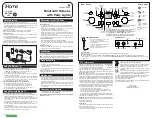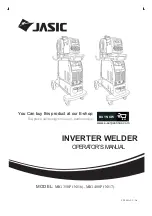
11
Fig. 10b: Receiver, back with open battery compartment
2
Mains supply operation
•
Connect the power supply unit (fig. 9) to the Receiver. Then plug in the power
supply to a wall socket.
•
Note: Even when using the power supply, it is always recommended to keep
batteries inserted in the Receiver. In this way, you can always ensure that the
device will always continue to work even in the event of power failure. Battery
power is used only if the unit is disconnected from the Receiver or from the
power supply.
•
During operation with the power supply, the "Receiver Mode" LED is green and
continuously lit (fig. 5)
Important information about the Transmitter
The transmitter is equipped with a vibration alarm. This vibration alarm can be switched
on or off at your choice. If vibration alarm is switched on and an alarm is being triggered
by the wet sensor, additionally to the acoustic signal of the receiver the alarm is also
being signalized by vibration directly at the body of the patient.
Important note:
The vibration alarm consumes significantly more battery power than
the radio signal of the transmitter. As long as the connected wet sensor will not be
separated from the transmitter, the vibration would continue until sensor and
transmitter will be disconnected from each other. Therefore, the vibrations alarm
duration is limited to a maximum of ca. 1 minute. However, by exceeding this time limit
a radio signal is furthermore being sent to the receiver.
At switched on vibration alarm, the capacity of the battery withstands approximately 80
alarm cycles. At switched off vibration alarm the lifetime of the battery maybe up to
several weeks.
+
-
-
+
Содержание wireless 2
Страница 1: ...1 Wireless alarm device for the monitoring of bedwetting enuresis Instructions for use ...
Страница 2: ...2 ...
Страница 25: ...25 ...
Страница 26: ...26 ...
Страница 27: ...27 ...












































